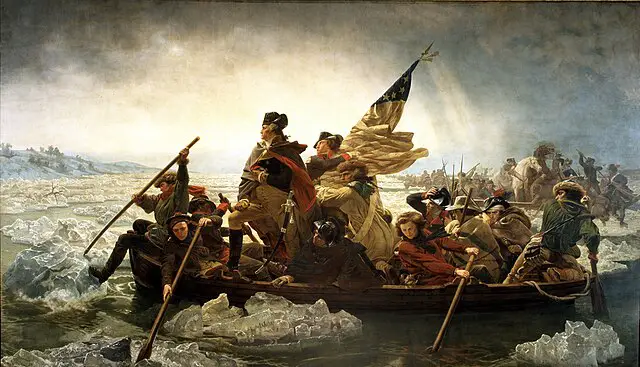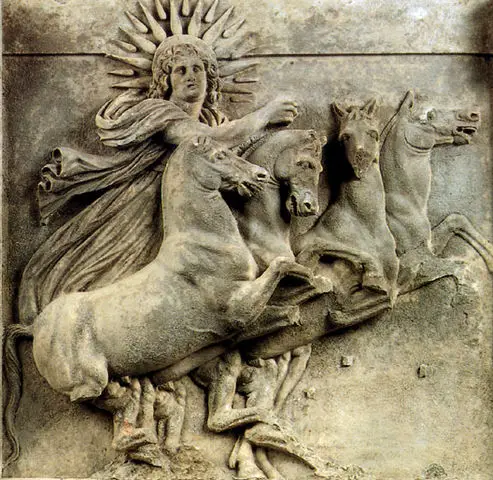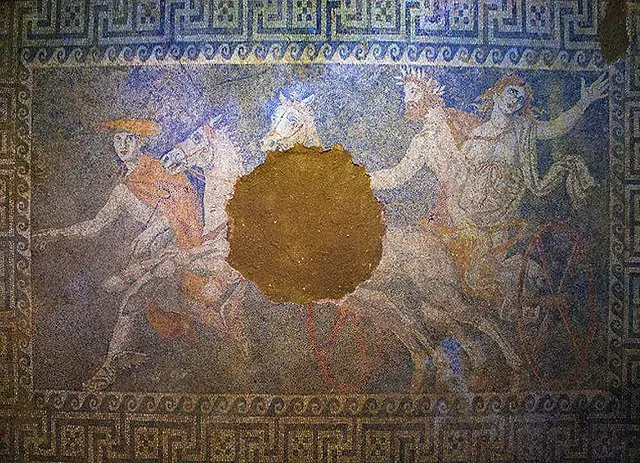| Further Reading | The Top 5 Fun Facts About Medieval Knights |
Medieval knights were known for wearing large and heavy metal armor. During the winter months this armor would often freeze over and cause considerable discomfort. There were however a couple things that Knights would do to keep themselves warm while wearing their armor.
Typically during the winter months knights would do 3 things to keep themselves warm while wearing their armor. First, the knight would often wear a thick jacket under their armor called a gambeson. Second, most knights would train while in their armor to build up heat. Third, during especially cold months knights would wear a wool cloak over their armor to retain heat.
Normally however it was commonly understood that military campaigns would stall out over the winter months. This was not because it was too cold for the medieval knights but rather that it was simply too hard to supply or field a medieval army during the winter months.
Here at The History Ace I strive to publish the best history articles on the internet. If at the end of this article you enjoyed it then consider subscribing to the free newsletter and sharing around the web.
Without further ado, here is how medieval knights would stay warm while wearing their armor.
During The Winter Months Knights Would Wear A Thick Jacket Under Their Armor Called A Gambeson
Nearly all medieval knights would wear thick protective clothing under their armor. However, during the winter months knights would wear an incredibly thick defensive jacket called a gambeson or arming doublet.
These jackets were made out of various materials such as wool, linen, horse hair, cotton, or even velvet. These jackets would be quilted with several layers and were made to fit the individual knight. On the top of these gambesons there might even be a layer of thick leather to protect the stitching and also provide some more protection.
These gambesons were quilted together in a cross stitch pattern to provide maximum protection against slashing sword blows. Contrary to popular belief a well made gambeson would be able to even stop arrows from injuring the wearer.
In many ways the knight’s best armor was his gambeson. It protected nearly all types of medieval weaponry. However, the gambeson was thick and could lead to overheating during the winter months. Often then a knight would get a lighter less protective gambeson made out of only a couple layers.
The best thing about these gambesons was that during the winter they would protect the knight from their freezing armor and the cold. The gambeson would be worn under the knight’s armor to provide warmth and protection against the elements.
Today we can think of these gambesons as giant padded blankets. The only problem for the knight while in the cold was getting their gambeson soaking wet. A wet gambeson could easily freeze solid and lead to the knight suffering from hypothermia.
However, for brief military campaigns and general everyday wear the gambeson would allow the knight to stay warm while wearing their armor.
Medieval Knights Would Move In Their Plate Armor To Build Up Heat
Another way that medieval knights would keep warm while wearing their armor during the winter months was to constantly be moving and training. This was because of the amount of energy needed to move the heavy armor which could weigh well above 100 lbs.!
While in the winter months if a knight was out in the field they would have to constantly move to prevent their armor from freezing up. The added benefit of this was that the knight would build up a lot of heat as they moved their heavy armor.
Medieval historians detail how knights and the nobles would hate going out on campaign during the winter months. Leaving the safe confines of the warm castle or home would mean that the knight would have to brave the worst of the winter weather. It was not the cold that the knight feared, rather it was the snow.
Snow would kill knights because it would cause their feet and hands to get wet. A knight’s leather shoes were not waterproof and a careless knight could easily get frostbite if they were not careful. The best way to combat this was to constantly be moving during the winter months to keep themselves warm.
The snow was killer for medieval knights outside in their armor. The easiest way to keep themselves warm was to constantly be moving if they were in the field. However, this was another reason why most knights and military campaigns would simply wait until Spring to go back into the field.
During Especially Cold Months Knights Would Wear A Cloak Over Their Armor To Retain Heat
The final way that medieval knights would stay warm while wearing their armor during the winter months was to wear a thick wool cloak.
Knights going out in their armor during winter was rare. Even rarer was the need to wear a cloak because the weather was so cold. As such historians have few remaining primary sources of the noble cloaks that medieval knights would wear over their armor.
We do know that these cloaks were ornately designed with the knights or lords insignia/coat of arms. Typically this coat would have a hood and be several layers thick. It would extend all the way down past the knights knees and be incredibly heavy. This was essentially a giant blanket that was durable so that it could survive the harsh winter weather.
Today our best surviving example of these cloaks are the Kinsale cloaks that come from northern Ireland. The rest of Europe would begin to phase out military cloaks during the 16th century as the medieval era came to a close. However, in northern Ireland cloaks would become a fashionable piece of clothing especially among the women.
These 20th century Irish cloaks were directly inspired from the cloaks that medieval knights would wear. They are thick, durable, and have a long extended hood to cover over the knight’s helm.
Our best surviving example of a medieval knight’s cloak comes from the 8th century AD Book of Durrow that depicts medieval knights wearing cloaks over their armor. The image at the top of this section is known as The Man of Matthew and it depicts a medieval knight wearing an ornate cloak to keep warm.
However, most knights would not have had to wear a thick cloak over their armor to keep warm. The knights of southern France for example would have had a relatively temperate winter when compared to knights of northern England where cloaks were needed.
That being said, one of the ways that knights stayed warm while wearing their armor was to wear a thick cloak outside of their armor to retain body heat.
Conclusion
There you have it; an entire article dedicated to the ways in which medieval knights would stay warm while wearing their armor.
In reality it was not the cold that was a danger to the knight. Rather it was the heat. During the summer months knights would be at risk of passing out from heat exhaustion from moving around in their armor. This was especially true if the knight was on crusade in the levant.
Here at The History Ace I strive to publish the best history articles on the internet. If you enjoyed this article then consider subscribing to the free newsletter and sharing around the web.
Further, you can check out some of the other articles below.
-
How The American Revolution Changed The World

Here is how the American Revolution changed the world. Many people are not aware of just how important this event actually was.
-
Why The Roman People Loved Chariot Racing

Why did the Roman people love chariot racing? Well it all comes down to these 3 reasons.
-
The Design and Color of Roman Chariots

What was the design and color of Roman Chariots? Were they faster or slower then normal chariots? Well here is everything!
Sincerely,
Nick